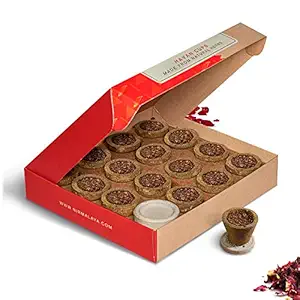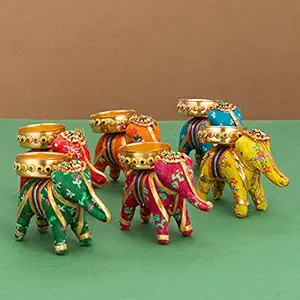માં ને પહેલુ તે નોરતુ પડવે થી, મારી સૈયરૂ રે
માં ને પહેલો થયો ઉપવાસ, હાલો જોવા જઈએ રે
માં ને બીજુ તે નોરતુ બીજનું, મારી સૈયરૂ રે
માં ને બીજો થયો ઉપવાસ, હાલો જોવા જઈએ રે
માં ને ત્રીજુ તે નોરતુ ત્રીજનું, મારી સૈયરૂ રે
માં ને ત્રીજો થયો ઉપવાસ, હાલો જોવા જઈએ રે
માં ને ચોથુ તે નોરતુ ચોથનું, મારી સૈયરૂ રે
માં ને ચોથો થયો ઉપવાસ, હાલો જોવા જઈએ રે
માં ને પાંચમુ નોરતુ પાંચમનું, મારી સૈયરૂ રે
માં પાંચમો થયો ઉપવાસ, હાલો જોવા જઈએ રે
માં ને છઠ્ઠું તે નોરતુ છઠ્ઠનું, મારી સૈયરૂ રે
માં ને છઠ્ઠો થયો ઉપવાસ, હાલો જોવા જઈએ રે
માં ને સાતમુ તે નોરતુ સાતમનું, મારી સૈયરૂ રે
માં ને સાતમો થયો ઉપવાસ, હાલો જોવા જઈએ રે
માં ને આઠમુ તે નોરતુ આઠમનું, મારી સૈયરૂ રે
માં ને આઠમો થયો ઉપવાસ, હાલો જોવા જઈએ રે
માં ને નવમુ તે નોરતુ નોમનું, મારી સૈયરૂ રે
માં ને નવમો થયો ઉપવાસ, હાલો જોવા જઈએ રે
Overview of "Mane Pelu Te Noratu Padvethi"
Title & Meaning
'Mane Pelu Te Noratu Padvethi' is a devotional Gujarati Garba song sung during Navratri, reflecting cultural pride and spirituality.
Artist & Recordings
This Garba is part of Gujarat’s folk tradition, performed by local artists and featured in live events as well as recordings.
Genre & Occasion
A devotional Garba, performed during Navratri festivals and community gatherings dedicated to Goddess Amba.
Language & Dialect
The lyrics are in Gujarati, showcasing folk dialects and expressions tied to Navratri culture.
Popularity & Reach
This Garba is widely recognized across Gujarat, performed by both villagers and urban Garba enthusiasts.
Lyrics Structure & Themes
Repetitive Chorus
The lyrics include repeating chorus lines that strengthen rhythm and group participation.
Imagery & Symbolism
Festive imagery, rituals, and symbolic devotion are expressed to honor the goddess.
Community & Togetherness
Highlights the bond of togetherness, faith, and unity during the Navratri celebration.
Emotional Resonance
The Garba creates joy, enthusiasm, and spiritual devotion among singers and dancers alike.
Devotional Invocation
The song begins with a prayerful invocation to Goddess Amba, seeking blessings for devotees.
Musical & Performance Elements
Instrumentation & Rhythm
Dhol, tabla, and rhythmic claps provide the traditional beats for this Garba performance.
Tempo & Dynamics
Begins with a steady pace, gradually increasing tempo to match the excitement of dancers.
Live vs Studio Renditions
Live performances feature extended verses and audience interaction, while studio versions are more concise.
Dance Cues & Movements
Lyrics guide hand claps, footwork, and circular Garba formations for dancers.
Audience Participation
Encourages everyone to sing, clap, and dance, making it an inclusive festival song.
Festival & Cultural Significance
Navratri Connection
This Garba is an important part of Navratri celebrations, adding devotion and energy to the festival.
Spiritual Meaning
The lyrics express faith, devotion, and surrender to Goddess Amba for blessings.
Cultural Heritage
Represents the living heritage of Gujarati folk Garba, preserved through generations.
Community Bonding
Brings people together in shared devotion, music, and dance during Navratri nights.
Joyful Celebration
Creates happiness, enthusiasm, and pride in Gujarati culture during festivities.
How to Use & Share
Translations & Transliteration
Offer English translations to make the song accessible to non-Gujarati audiences.
Audio / Video Embeds
Embed videos and audio recordings for better audience engagement and experience.
Printable Lyrics & PDFs
Provide downloadable lyrics in PDF format for cultural and devotional use.
Performance & Dance Tips
Share costume ideas, Garba step guides, and tips for performing this traditional song.
SEO & Social Media
Use keywords like Gujarati Garba, Navratri song, Goddess Amba; encourage sharing on social platforms.
'Mane Pelu Te Noratu Padvethi' is a devotional Gujarati Garba song sung during Navratri, reflecting cultural pride and spirituality.
This Garba is part of Gujarat’s folk tradition, performed by local artists and featured in live events as well as recordings.
A devotional Garba, performed during Navratri festivals and community gatherings dedicated to Goddess Amba.
The lyrics are in Gujarati, showcasing folk dialects and expressions tied to Navratri culture.
This Garba is widely recognized across Gujarat, performed by both villagers and urban Garba enthusiasts.
The lyrics include repeating chorus lines that strengthen rhythm and group participation.
Festive imagery, rituals, and symbolic devotion are expressed to honor the goddess.
Highlights the bond of togetherness, faith, and unity during the Navratri celebration.
The Garba creates joy, enthusiasm, and spiritual devotion among singers and dancers alike.
The song begins with a prayerful invocation to Goddess Amba, seeking blessings for devotees.
Dhol, tabla, and rhythmic claps provide the traditional beats for this Garba performance.
Begins with a steady pace, gradually increasing tempo to match the excitement of dancers.
Live performances feature extended verses and audience interaction, while studio versions are more concise.
Lyrics guide hand claps, footwork, and circular Garba formations for dancers.
Encourages everyone to sing, clap, and dance, making it an inclusive festival song.
This Garba is an important part of Navratri celebrations, adding devotion and energy to the festival.
The lyrics express faith, devotion, and surrender to Goddess Amba for blessings.
Represents the living heritage of Gujarati folk Garba, preserved through generations.
Brings people together in shared devotion, music, and dance during Navratri nights.
Creates happiness, enthusiasm, and pride in Gujarati culture during festivities.
Offer English translations to make the song accessible to non-Gujarati audiences.
Embed videos and audio recordings for better audience engagement and experience.
Provide downloadable lyrics in PDF format for cultural and devotional use.
Share costume ideas, Garba step guides, and tips for performing this traditional song.
Use keywords like Gujarati Garba, Navratri song, Goddess Amba; encourage sharing on social platforms.


